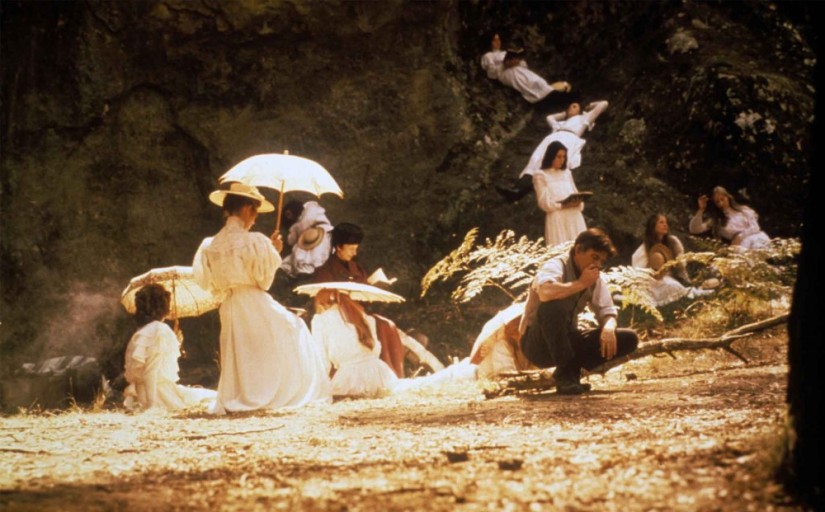
Every now and again, without warning, a movie or a book or an album will catch hold of me like a fever dream, haunting my waking and sleeping hours, niggling and gnawing at the edges of my consciousness. While it lasts, if it’s music, I play it over and over while it earworms into my brain; if it’s a book or movie, I explore it online and inline. Until, as suddenly as it has come, the fever lifts, the obsession ends, and the object of my fascination assumes normal proportions but retains ever after a hint of its magnetic, magic allure.
So it was for me a couple of months ago with Picnic at Hanging Rock — first the 1975 movie directed by Peter Weir, and then the 1967 book written by Joan Lindsay. And while I admit that I may perhaps have been particularly spellbound, these two works have an innately compulsive nature, as the trailer for the film demonstrates:
The soft focus of the camera lens and the panpipe music — so accurately described as “delicate, ethereal and intensely ominous” by the National Film and Sound Archive of Australia — impose a dreamlike state. And the simple, ghost story plot of mysterious disappearance in the wake of a schoolgirls’ picnic on Valentine’s Day 1900 at the foot of a jutting, ancient volcanic structure is irresistible.
Neither the movie nor the book linger long at the picnic; rather, the tale is the aftermath, the puzzled and sometimes puzzling efforts on the parts of the various characters to come to grips with the occurrence and with the longer-term impacts, what Lindsay calls the ripples, of the disappearances. They struggle, largely unsuccessfully, to fit this inconceivable episode into the fabric of their lives, because it is so outside the ken of these modern people, who live against but not in this awesome land. The symbolic sexuality of the disappearance — all that virginal white and Victorian orderliness piqued, perturbed, pierced, and penetrated by the ancient, looming pagan mount and the primitive insects and reptiles that populate it — is literally unthinkable, but has a snakelike, hypnotic fascination.
And the added fascination for the viewer/reader is that the story feels true.
Lindsay addresses that question at the very start of the book, neatly, serenely, and confoundingly blurring the line between truth and fiction with this note before the title page:
Whether Picnic at Hanging Rock is fact or fiction, my readers must decide for themselves. As the fateful picnic took place in the year nineteen hundred, and all the characters who appear in this book are long since dead, it hardly seems important.
Joan Lindsay wrote this book at age seventy-one in four weeks. Weir’s movie is extremely faithful to the book, fixing indelible images to Lindsay’s clear, ever so slightly arch, distanced, and often off-putting prose.
As always, in matters of surpassing human interest, those who knew nothing whatever either at first or even second hand were the most emphatic in expressing their opinions; which are well known to have a way of turning into established facts overnight.
The original manuscript had an eighteenth chapter that explains what happened on the rock; her publishers told her not to include it. Having read the chapter, which is available in a much-padded little volume called The Secret of Hanging Rock, they were completely correct in this judgment. In fact, The Secret of Hanging Rock is the perfect antidote to the Picnic‘s fever. The six-page chapter is in tone with the rest of the book, but the editors were right: it is not needed. But what is also not needed is the turgid academic prose endlessly analyzing, classifying, and delineating. No, no: I guess this is some people’s way out of the rock’s grip — explication, interpretation, and elucidation. And that is useful for some art for some times. But not for this; this needs to stay sweaty and weird and inexplicable and temptingly near true.
